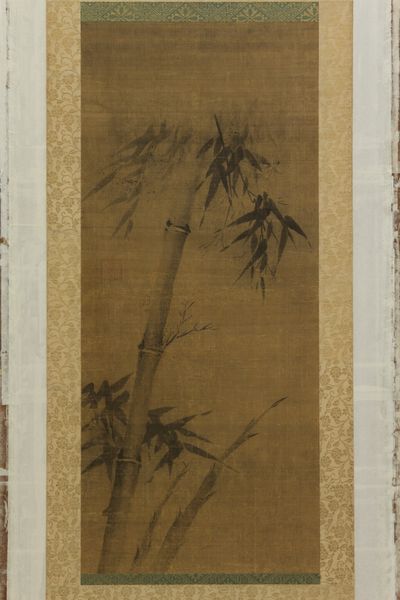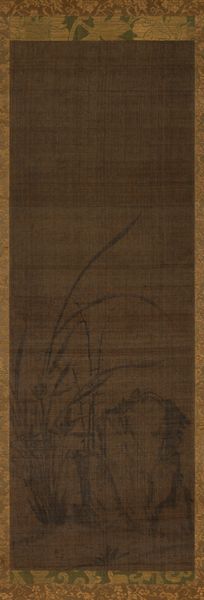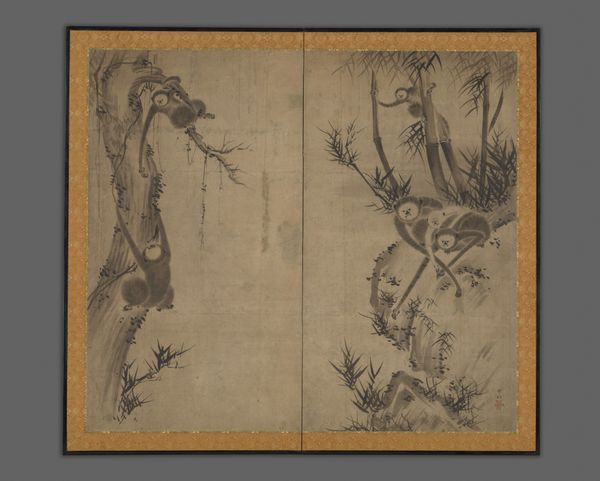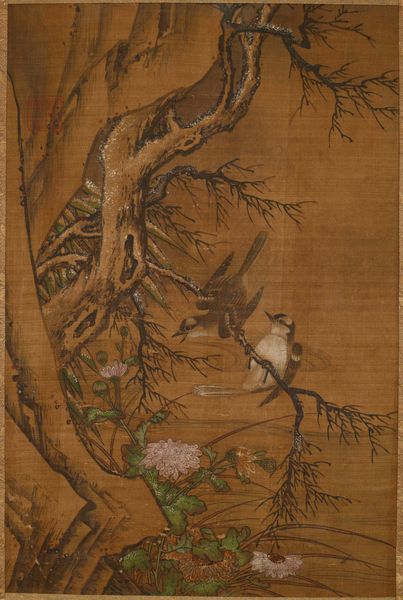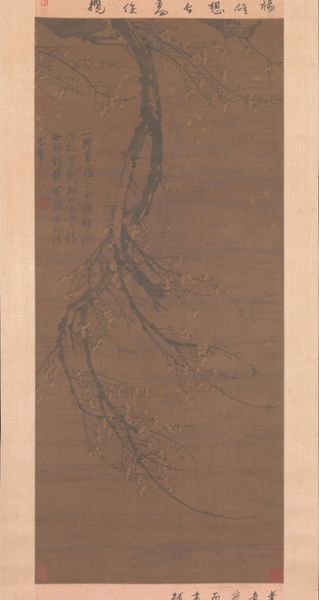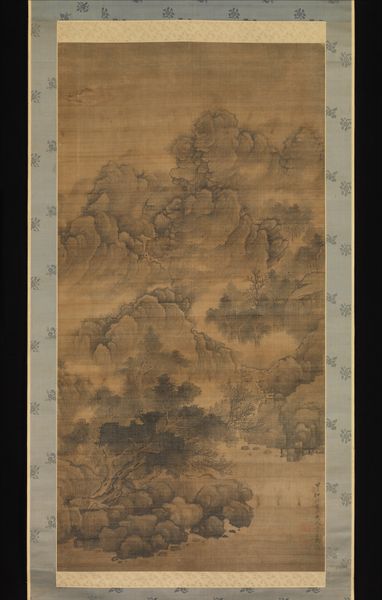
painting, hanging-scroll, ink
#
medieval
#
painting
#
asian-art
#
landscape
#
figuration
#
hanging-scroll
#
ink
#
china
#
line
Dimensions: 69 3/4 × 23 13/16 in. (177.17 × 60.48 cm) (includes roller ends)38 1/4 × 17 1/16 in. (97.16 × 43.34 cm) (image)
Copyright: Public Domain
Editor: Ma Lin’s hanging scroll, “Visiting a Recluse with a Qin,” created around the 13th century with ink on silk, really struck me with its serene and almost dreamlike atmosphere, despite the rather somber palette. What catches your eye when you look at it? Curator: I’m immediately drawn to the dynamic interplay between void and form. The composition’s success resides less in its representational accuracy and more in how the artist organizes shapes, lines, and tonal variations across the picture plane to establish visual equilibrium. Notice how the dominating, gnarled pine tree on the right is counterbalanced by the empty space to its left, only to be interrupted lower by smaller trees. Editor: So you're saying that it's less about the story it might be telling and more about the relationship between the different elements? Curator: Precisely. Observe the application of ink wash. Where does it thin and fade? Where does it pool and darken? Note the calligraphic quality of the brushstrokes that articulate the branches, juxtaposed with the more diffuse treatment of the distant mountains. These formal contrasts give vitality to what could easily become a static composition. It pushes beyond the traditions of landscape paintings, prioritizing its structure. Editor: I see what you mean. It’s almost like a dance of dark and light, solid and empty. Looking at it that way, the content takes a back seat to the overall design. Curator: Precisely, and in appreciating the design we find new pathways into understanding not only what it is to see, but also, what composes "Seeing." Editor: I never would have thought to approach it that way, focusing so much on the formal elements rather than the narrative. I’ve definitely gained a new perspective! Curator: As have I. Analyzing visual language of “Visiting a Recluse with a Qin” underlines the powerful relationships embedded within its composition.
Comments
minneapolisinstituteofart almost 2 years ago
⋮
This painting is traditionally attributed to Ma Lin of the late 13th century. Ma artists evolved a formula for painting wherein the pictorial surface is divided in half diagonally. One side is filled with pictorial motifs, while the other side is left empty to suggest vast space. Here a scholar is shown being followed by his servant who carries a qin (a kind of lute). A feeling of vague melancholy is a hallmark of Ma Lin. Here, the lonely scholar pausing for a moment to enjoy the transient beauty of the mist-filled landscape strikes a poignant chord.
Join the conversation
Join millions of artists and users on Artera today and experience the ultimate creative platform.
